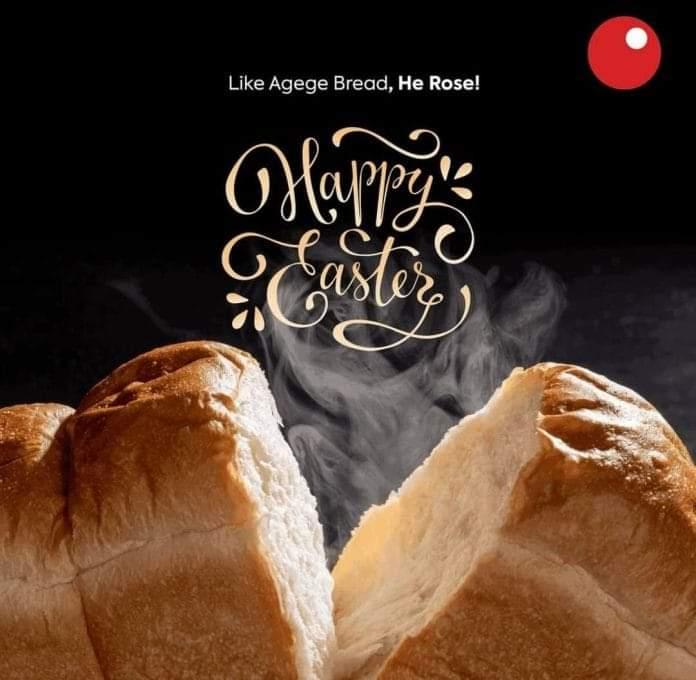
Behind Sterling Bank’s Easter campaign controversy
By Zion Rufus
There are creative concepts that sound fantastic in the boardroom and during creative brainstorming sessions. However, the ultimate factor that makes an ad campaign successful is how appealing an advertising message is to the target audience.
What’s more, grabbing the attention of customers can be very difficult, and to appeal to consumers’ receptivity, creatives are figuratively tethered while walking the fine line between innovation and banality.
In fact, creativity knows neither boundaries nor rules, but even in the heat of creating outstanding marketing campaigns, established laws, cultures, traditions, and religious beliefs constantly keep marketers on their toes, especially in the age of ethical consumerism and consumer sovereignty.
Recently, Sterling Bank Plc ran into troubled waters with the Nigerian public even as its corporate existence came under intense scrutiny after it shared an Easter ad campaign. The catchphrase and image of the campaign compared the resurrection of Christ to Nigeria’s local bread popularly known as “Agege Bread”. “Like Agege Bread, He rose,” was the tagline, accompanied by an image of steaming hot bread broken in halves.
A thunderous backlash immediately followed the controversial message which didn’t sit well with the Christian community as the ad, they complained, was insensitive and provocative.
In response to the criticism which swept across social media platforms, Sterling Bank pulled down the controversial ad and issued an apology to the public. Meanwhile, even the apology was equally mired in controversy, as the copy read, “Let the one who has never sinned cast the first stone. For our recent errors, we sincerely apologize. Forgive us in the spirit of Easter.”
Industry watchers considered the apology more controversial, suggesting that it smacks of justification rather than remorse. They noted that rather than dousing the tension, the ‘reluctant’ apology further aggravated the ostensibly bruised sensibilities of Christians who felt targeted with the Sterling Bank Easter message.
Giving his expert views on the Sterling Bank’s controversial ad campaign, Lanre Basamta, a marketing professional, said: “Advertising as we know it has changed. Today, because the channels of communication are vast, organizations are sending communications out to their customers. So, they don’t have all the time to validate, verify, or research any advertising work. As a result, a few things fall through the cracks, and quality and standard suffer.”
“An idea could be great; an idea that is cataclysmic in one instance, if it was executed a little bit differently can become brilliant. That’s the world we live in. The difference between what’s brilliant and what’s tacky is becoming slimmer by the day. So, the fact that advertising as we know it has changed has now created a greater propensity for errors. Now, everything is communication, everything is advertising, and there isn’t enough time to research, review, adopt and adapt,” Mr. Basamta added.
Another industry egghead who craved anonymity told MARKETING EDGE in an exclusive interview that creative guys usually find themselves in a dilemma.
“Let’s talk about Easter for instance; these creatives get briefed to do something amazing around the ‘He’s Risen’ Brief. Mind you, it’s a yearly thing by the way; so, every Easter, it’s like a brand creative challenge on social media. The brief is very direct and sort of one way, and everyone has done so many things around it that it will look like copying other people’s work when you use the same caption or direction used years ago.
“I think it would be easier for organisations that have in-house teams to try multiple directions, or trial different samples till they get the most acceptable and appealing one. But for brands who give out to agencies, the turnaround time becomes challenging. So, it’s a function of multiple things.
“Firstly, the Easter concept in itself is very strict and centers around a single theme, hence it makes it difficult for the creatives to do something new that’s not been done before.
“Secondly, in the quest for trying new things, crazy ideas pop up. Now, if the concept isn’t tested or they didn’t listen to feedback from people, the result might be really drastic. The theme of Easter centers around “He’s Risen”. Trust me, every brand has done, used the copy, done creatives around it. It’s almost like the water is dry now and there is nothing else to use. So, unless you have a strong creative team, an open feedback system, it becomes difficult to get things done,” the source explained.
Creating the right Easter marketing campaign can be just as easy and tough at the same time. Because the slightest error can cost creatives and marketers so much, considerations around sensitive subjects like gender equality, gender violence, culture, religious beliefs, and traditions are highly needed. When it comes to these factors, marketers are usually advised to tread carefully.




Comment
No comments found.